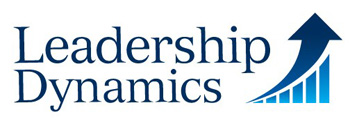“Four Simple Rules to Double Your Sales” from Nancy Martini blogged by Geoffrey James of BNet
Here is a great article that I thought you would find interesting about increasing the top line — good basics and good approaches that make a difference... Nancy
Four Simple Rules To Double Your Sales
By Geoffrey James | April 12, 2011
All sales professionals think that they’re focused on the customer. However, in many cases, they’re actually focused on something else all together, like communicating product knowledge or convincing the customer to buy. Being customer focused means putting aside all of that and actually being 100 percent present for the customer.
This post, based upon a conversation with Nancy Martini, CEO of the training firm PI Worldwide, describes four key rules for being customer-focused at different stages in the sales cycle. Please note that this is incredibly valuable information that, when mastered, will double or triple your close rate, and set you up for future sales from your current customers.
So please take this post seriously. Bookmark it, and refer to it often.
RULE #1: Use Research as a Platform for Learning
Most sales pros know that they should walk into a customer engagement only after doing research into the customer’s situation. However, the way that you use that knowledge differs greatly depending upon whether or not you are focused on the customer or focused on yourself.
Sales pros who are focused on themselves typically begin a customer engagement by lecturing the customer, in the hopes that the customer will be impressed with the fact that the sales pro has done his research. For example, a sales pro might open a customer conversation like this:
My research reveals that your firm is probably losing money because of poor inventory control. Since your industry is currently under stress due to the weak economy, you may need our product to help you fix this problem. That’s why I’m here to talk with you today.
By contrast, sales pros who are focused on the customer, merely use research as a way to bridge into a meaningful conversation, like so:
It’s my understanding that your industry, in general, has challenges connected with the weak economy and difficulties in controlling inventory. However, I’d like to know how you view the situation and to what extent that influences what’s going on in your own manufacturing facilities.
Can you see the difference? The first approach makes the sales pro sound like a know-it-all who’s going to tell the customer how to run his business. The second approach shows that the sales pro did the appropriate research, but the request to hear about the situation “from the horse’s mouth” shows the customer that the sales pro doesn’t assume he knows more about the situation than the customer himself.
RULE #2: Ask Questions that Create a Broader Context
Most sales pros know that selling involves asking meaningful questions, and many also know the open-ended questions are generally more effective than closed-ended questions. However, there are actually three levels of questioning:
• Level #1. Close-ended questions. These have short, definite answers like “yes” or “no” or a specific bit of information.Close-ended questions can be useful, but they tend to create a lull in the conversation, forcing the sales pro to segue, often awkwardly, into the next line of inquiry. Example: “How many widgets do you use every year?”
• Level #2. Open-ended questions. These are intended to solicit a more detailed response from the customer. However, sales reps often craft open-ended questions to lead the customer into considering a particular product. As such, they typically result in a short answer that echoes the response that the customer assumed (correctly) that the sales pro expected to hear. Example: “What are your needs when it comes to widgets?”
• Level #3. Strategic questions. These are questions that invite the customer to expound upon a situation. They treat the customer as the expert and naturally lead towards a deeper conversation that can lead towards a collaborative sales opportunity. Strategic questions usually begin with one of the following phrases: tell, share, describe, explain, explore, or help me understand. Example: “Tell me about how your company uses widgets.”
In order to be customer-focused, you should always prepare two or three strategic questions for each customer meeting.
These strategic questions will reveal valuable information that will prove useful throughout the sales cycle. More importantly, they will make customers feel as if they are guiding the discussion.
RULE #3: Present Solutions in Terms of Customer Value.
It’s amazing how many sales professionals falter on this one. There are three general ways that sales professionals can present a solution:
• Feature/Function. You describe the offering, what it does, and why it’s a quality offering. This is often ineffective, because customers are far more interested in their own business and their own problems and may not be able to understand how or why a given feature or function might be meaningful to them. Example: “Our widgets are manufactured locally.”
• Feature/Benefit. The sales pro describes a feature or function, but ties it to a particular benefit to the customer. While this is better than the feature/function approach, the feature/benefit approach does not put the feature into the context of the customer’s business. Even if the customer recognizes the benefit, it’s not immediately apparent why that benefit is of value to the customer. Example: “Our widgets are manufactured locally, so you can be assured of an immediate supply regardless of demand.”
• Value/Benefit. The sales pro summarizes the value that the customer would like to achieve through the offering, and the ties that value to a specific benefit of that offering. This approach allows the customer to immediately visualize the positive financial impact of buying the solution. Example: “You’ve explained how manufacturing delays have cost your company $10 million over the past year and that those delays are the result of the inability to get widgets in a timely manner. Because our widgets are manufactured locally, we can provide them whenever you need them with less than a day’s notice.”
Can you see the difference? When you present value/benefit you are telling the story from the customer’s perspective, rather than the perspective of your firm and its offerings.
RULE #4: Consider Closing the BEGINNING of the Sale.
Most sales pros see closing the deal as the end of the sales process. From their perspective, they’ve worked hard by researching the customer, investigating the customer’s needs, and presenting a viable solution. The sales pro is often a bit worn out by this point, and simply want to know whether or not the customer will buy, so that they can either write up the order or move onto the next prospect.
That’s ironic, because it is at this point that the customer is fully awake and aware. It’s relatively easy for a customer to consider alternatives, discuss possible solutions, and sketch out the basic parameters of what might happen.
However, when it comes to the point of actually making a decision, suddenly the customer’s money and budget is on the line. This fact energizes the customer right at the point when the sales pro is beginning to wind down in expectation of a final decision.
If you want to be customer, focuses, you see closing as a collaborative process that involves working together to ensure that the final deal makes sense.
If the customer surfaces objections, a customer-focused sales pro uses further strategic questions to investigate and clarify the situation. That investigation is then reflected in a new or more detailed expression of the value of the offering to the customer.
NOTE: The rules in this post are based upon a conversation with Nancy Martini, CEO of the training firm PI Worldwide. I’m a huge fan of her work and am, in fact, working with her on a book project. I’ll write more on this as the project moves forward!

